Do you want to grow more vegetables with less effort? Perhaps you’re tired of harvesting all your crops at once, and instead you want a vegetable garden layout that gives you a consistent supply of fresh organic vegetables for your family.
These DIY layouts will help you plan out how much you need to grow, when you should plant it, and what to plant next to each other so all your plants thrive instead of struggle.
First decide on how big your vegetable garden layout should be and then choose a planting plan that works for your skill level and available resources. Our guide on how to lay out a vegetable garden will help you get the most out of your garden space. Let’s get planning!
How Many People Are You Growing For?
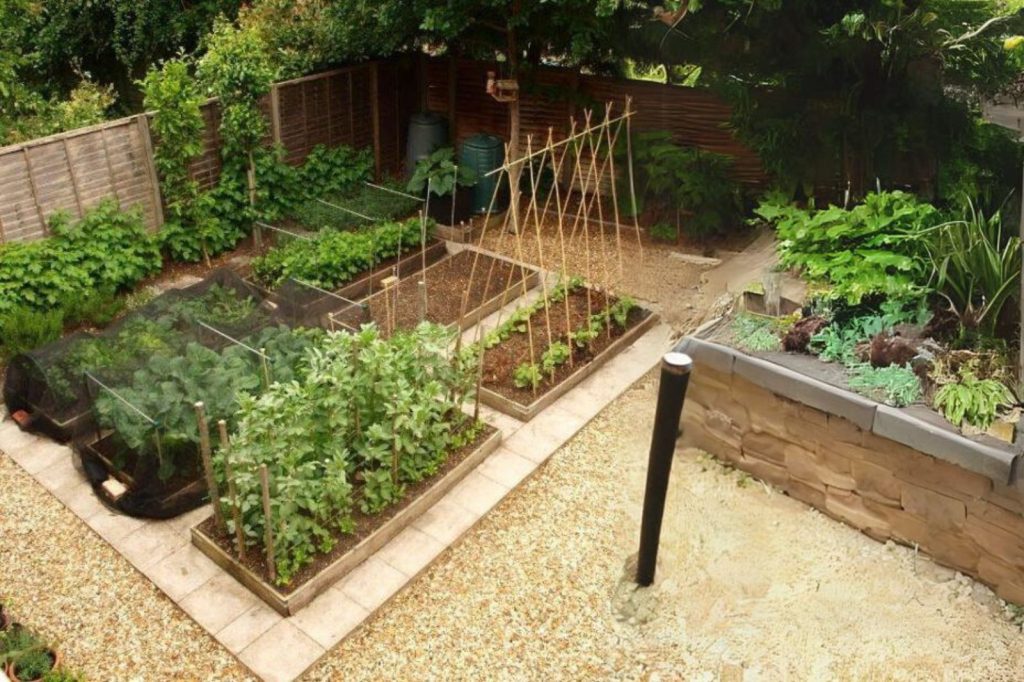
If this is going to be your first vegetable garden then choose one of our smaller vegetable garden layouts to begin with. Big vegetable gardens require a lot of time to maintain, and can be overwhelming for new gardeners.
We’ve carefully selected the best crops for beginner gardeners to grow. You’ll find that the more difficult crops that require special care and protection from pests are only grown in the largest vegetable garden plans.
Each vegetable garden plan is designed to get the most production out of the given area with the least amount of effort and resources from you.
Beginner’s Vegetable Garden Layout
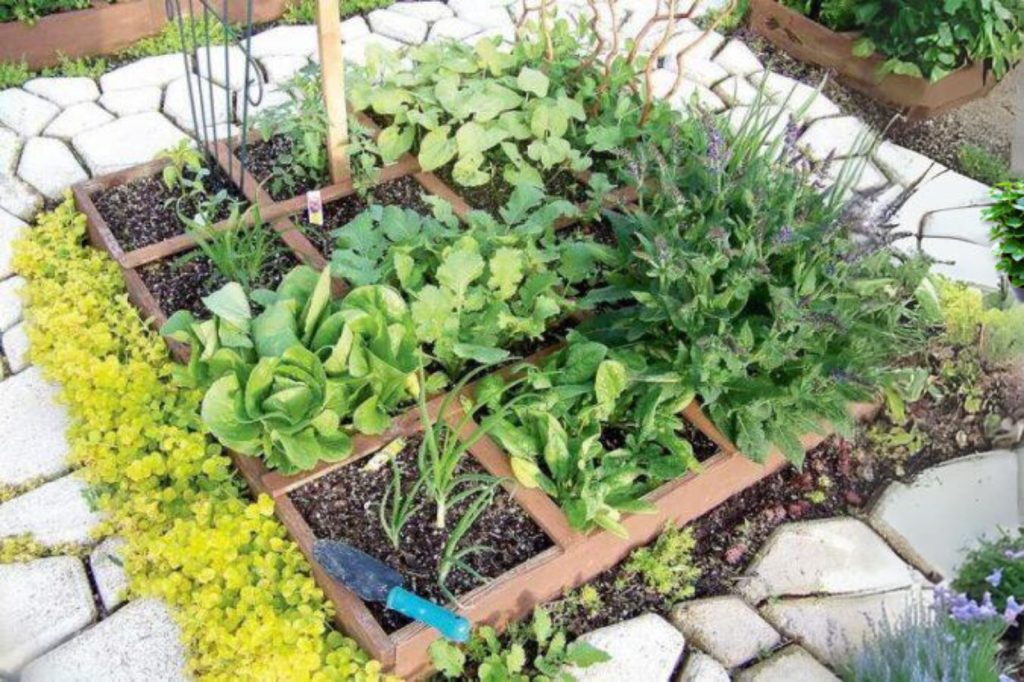
At 4×4 feet this vegetable garden is small enough that you can even fit it on your patio. Don’t be fooled by it’s small size though – we’ve planned this garden to be very productive!
You’ll be following the square foot gardening method, which makes the most use of every available space in your patch.
This garden will provide plenty of salad greens and cooking herbs for a small family over the whole summer. We’ve chosen fast growing crops to give you the most production from a small area. The herbs will help defend your plants from pests and diseases too.
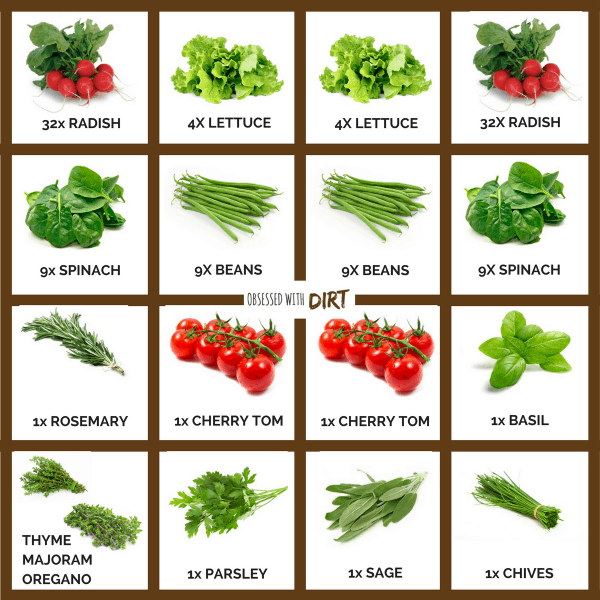
Size: 4×4 feet
Weekly upkeep: 1 hour
Harvest: Salad greens and cooking herbs for a family of four
Kitchen Garden Layout
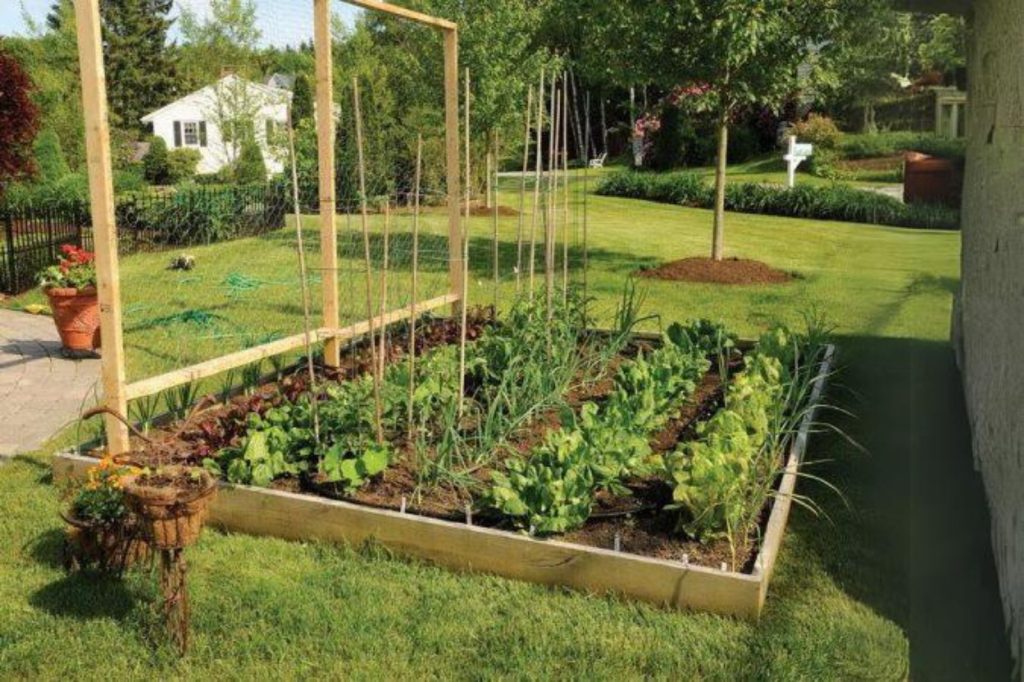
If you want to grow enough food to feed one person over the whole summer then this is the garden layout for you. For this vegetable garden layout we are using the row cropping method.
You’ll plant your crops in rows so they are easier to maintain. The wider spacing between plants will help them grow without competition, but you’ll need to keep weeds under control and a watchful eye for pests.
This vegetable garden layout grows crops that require more regular maintenance. But your efforts will be richly rewarded as once these crops start producing, they’ll keep your fridge and pantry overflowing with fresh produce all summer long!
We’ve chosen plants that are resilient to pests and diseases, as well as being resilient and forgetful (or busy) to lazy new gardeners.
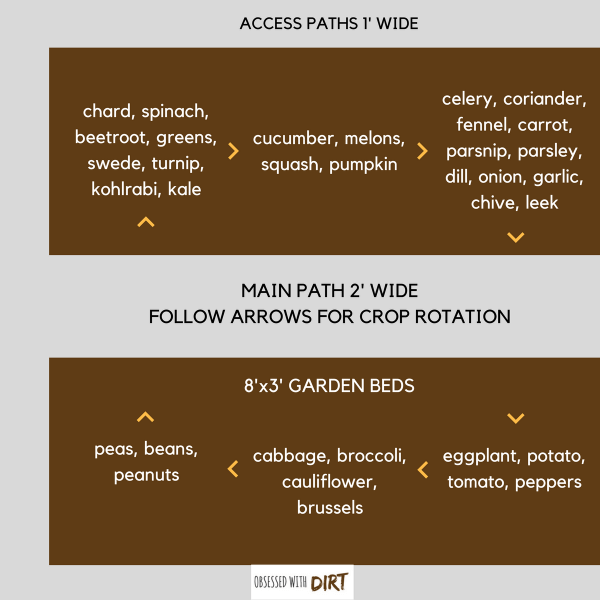
Size: 10×10 feet
Weekly upkeep: 3 hours
Harvest: 2-3 meals a week for a family of 4
Backyard Vegetable Garden Layout
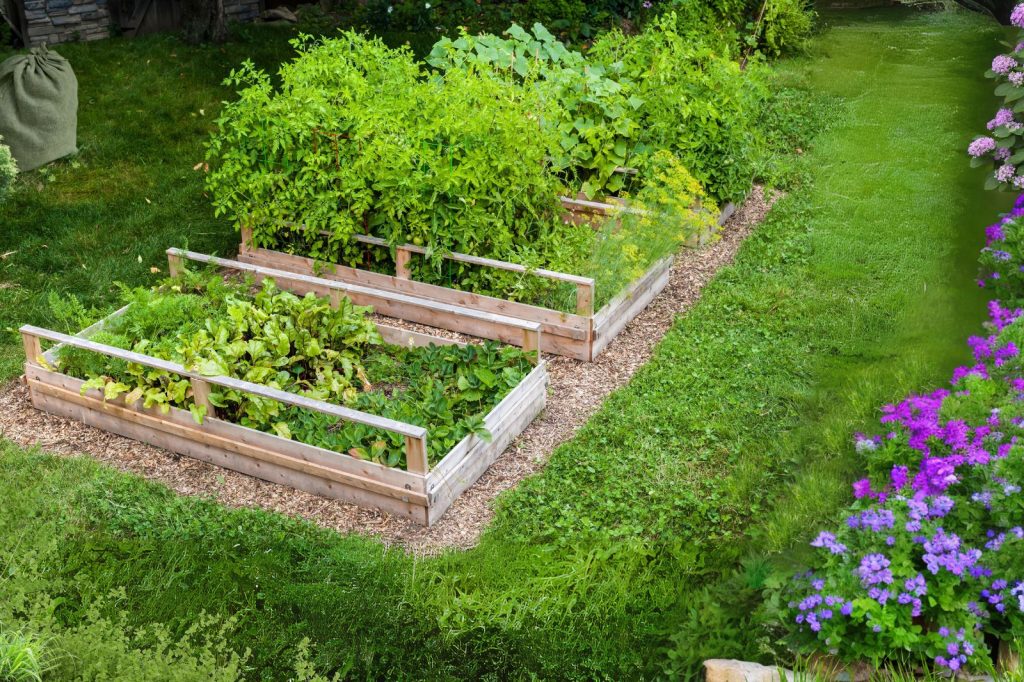
Perfect for small families, this garden is a great way to get the whole family outside on the weekends. There’s plenty to do each week from training tomatoes to harvesting pumpkins. You’ll teach your children how to care for something and they’ll actually start to eat their vegetables too!
If you’ve got the space, resources, and time to grow a larger vegetable garden then this is a great planting layout to follow. Many gardeners make the mistake of over-planting a large vegetable garden, or they plant everything all at once.
Successive planting gives you a consistent harvest over the whole seasonClick To TweetThis garden plan shows you how to grow a super productive garden that gives you a variety of vegetables over the whole growing season. We’ve carefully balanced crops that produce consistently over a long period with crops that have one-time harvests.
You’ll need to invest more time and resources in maintaining and establishing your garden, but you’ll be richly rewarded for your efforts.
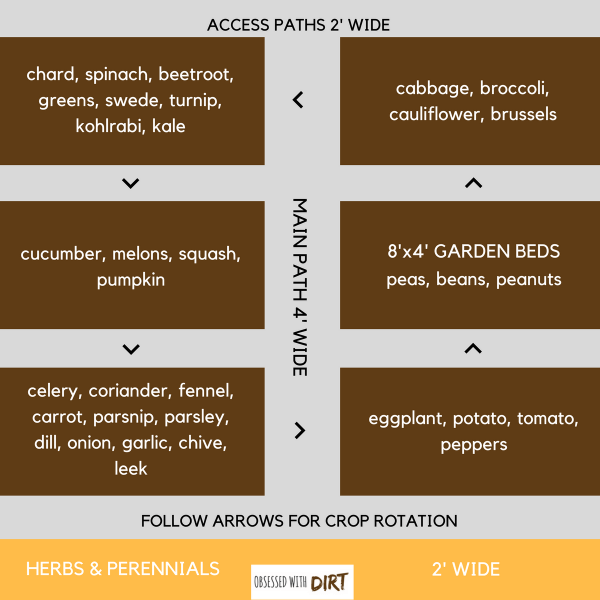
Size: 20×20 feet
Weekly upkeep: 8 hours
Harvest: 5 meals a week for a family of 4
Prepper’s Vegetable Garden Layout
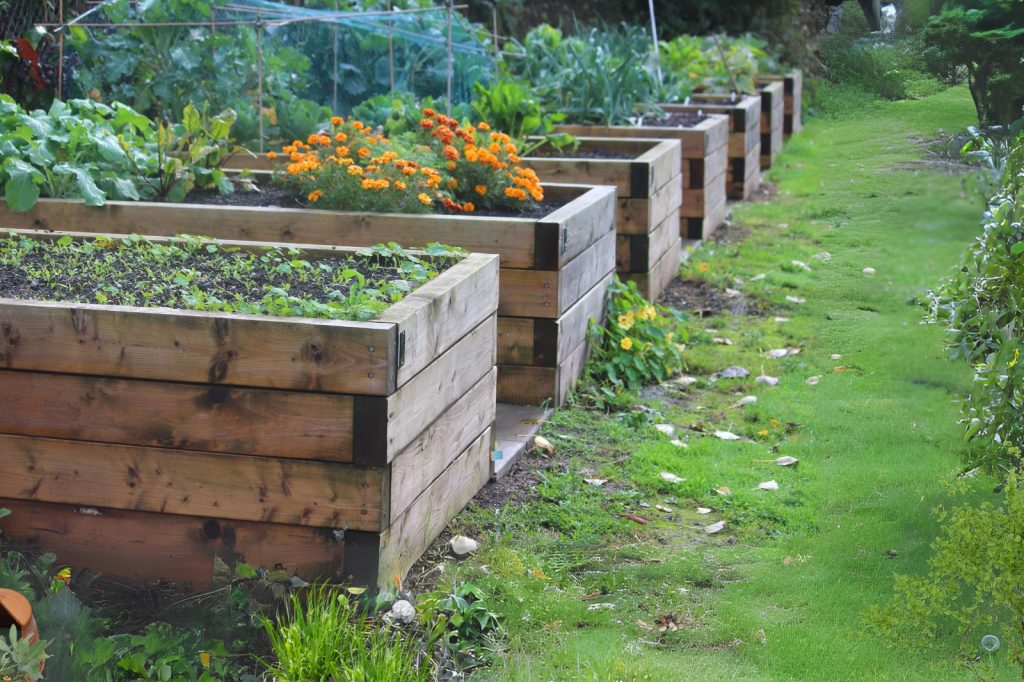
For the more ambitious gardeners among us this vegetable garden plan will keep you busy all weekend long. You’ll be rewarded not only with barrow-loads of produce each week but everyone you know will be coming and admiring your productive little patch.
Be warned though – because this is our most advanced vegetable garden plan. You’ll need to have greened your thumbs on some smaller gardeners before attempting this one. If you’ve got the time, the space and the resources then this garden will grow plenty of produce for you to share.
You’ll even have plenty for canning and preserving too. The big harvests will quickly overload your fridge and pantry so you might want to consider using a root cellar to store your crops.
We’ve included a balanced variety of continuous cropping plants that’ll overflow your pantry every week with fresh produce. For this reason we’ve chosen the crops that store well out of the fridge and will keep through the winter.
There’s also a variety of one-time crops that you’ll need to plant and replant throughout the season. You can can, freeze and store these however you like – again we’ve chosen the best crops for long term storage.
Some crops will take the full season to grow and mature before you can harvest them, but they’ll feed you right through the winter when it’s hard (or impossible) to grow crops outside.
This is every vegetable gardener’s dream veggie patch.
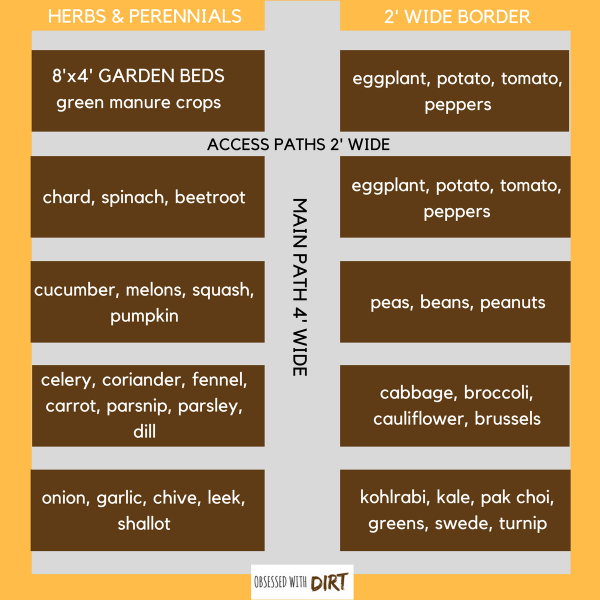
Size: 40×40 feet
Weekly upkeep: 16 hours
Harvest: Year-round supply of vegetables for a family of 4
Companion Planting Vegetable Garden Layout
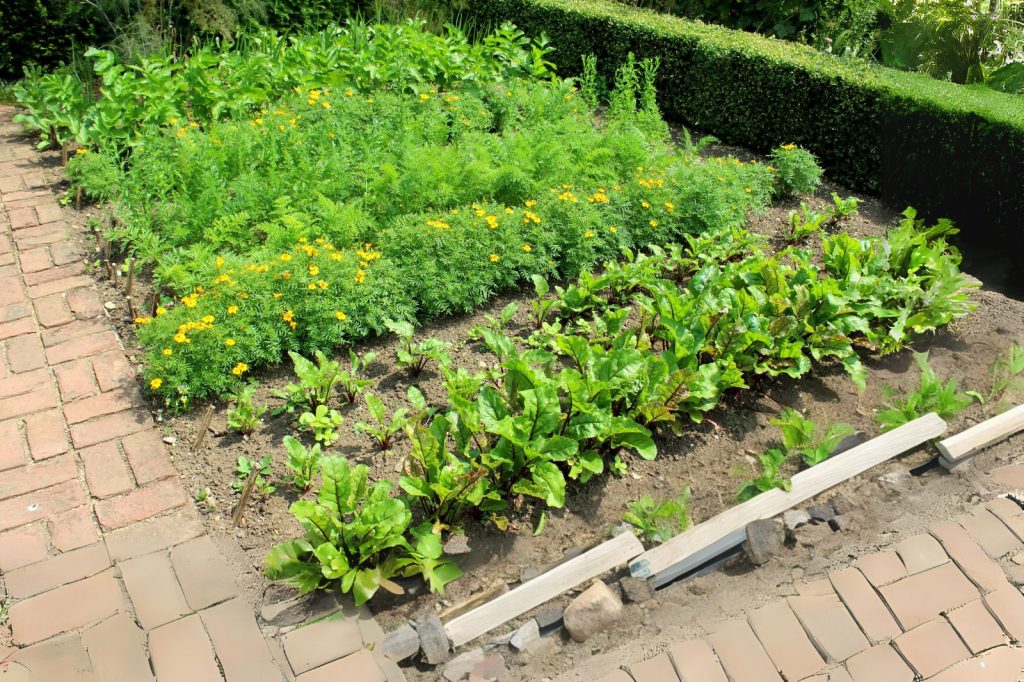
In companion planting, several plants are cultivated next to one another for promoting mutual growth. This method will help increase crop yields, control pests and diseases, and improve soil quality. You can choose from various companion planting designs, and each has its benefits.
Three Sisters
The Three Sisters method involves planting beans, squash, and maize together. Being a leguminous plant, the beans add nitrogen to the soil, which helps the corn and squash grow healthy. Meanwhile, the maize supports the beans in climbing, and the squash acts as a ground cover to retain moisture and prevent weeds.
Square-foot
Another popular method is Square-foot planting, where we grow crops in square-foot garden sections. This is a great way to maximize space and get high yields, especially with a small garden.
Inter-cropping
Inter-cropping is another technique to grow multiple crops in the same row or bed. This method can help reduce pests and diseases and improve soil quality, leading to give agricultural yields.
Companion Rows
In Companion Rows plants are grown in rows next to each other. This method gives better yields, minimize pests and diseases, and enhance soil quality.
Ultimately, your garden’s best companion planting method will depend on your preferences and needs. So, you have fun experimenting and finding out what works best for you!
Raised Bed Garden Layout
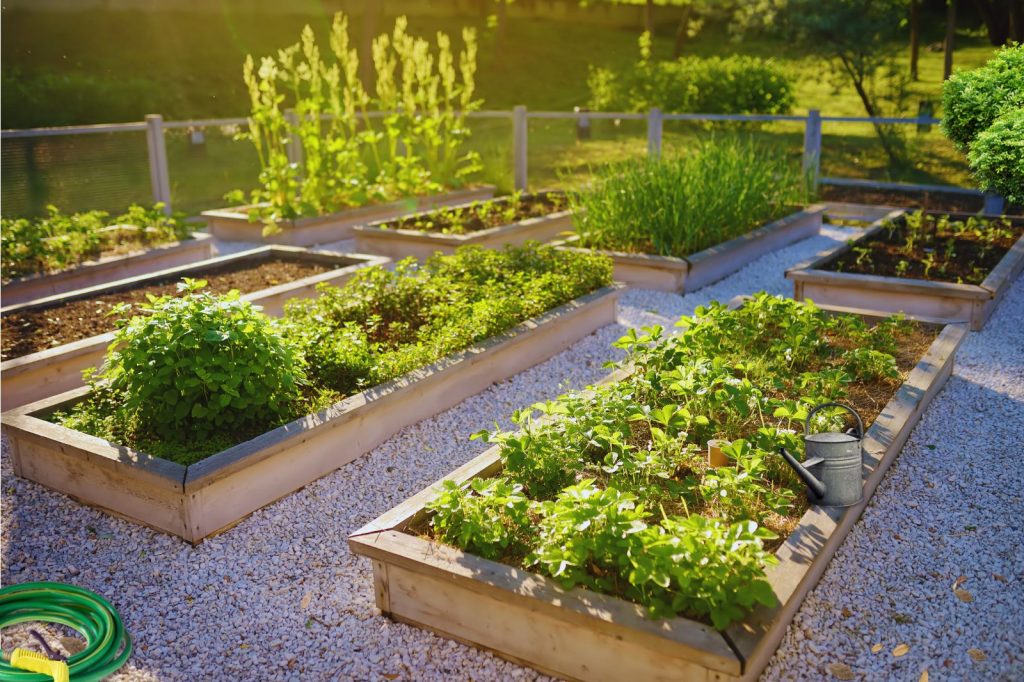
One of the best ways to cultivate plants in a short space is to prepare an elevated bed garden or a raised bed garden. The 4×8 size is one of the most common sizes for raised bed vegetable gardens. The following advice can help you plan and plant a 4 x 8 raised bed layout:
Select the ideal location
The raised bed must be built in a location with adequate drainage and at least six hours of sunlight every day.
Plan your layout
For your raised bed garden, you can employ a range of designs. The square foot garden layout, which divides the bed into 1-foot squares, is one common arrangement. This facilitates garden planning and planting.
Prepare the soil
As soon as the base is ready, prepare the soil by adding a high-quality soil mix, preferably one that is high in organic matter, to the raised bed. Compost and other organic matter can be added to the soil to increase fertility.
Select your plants
The first things you should think about when selecting plants for your raised bed garden are how much sunlight, how much water, and how they grow. In your 4×8 raised bed, I suggest growing tomatoes, peppers, cucumbers, lettuce, and herbs.
Plant your garden
Now that your design and plant selection are complete, it’s time to get your garden planted. To guarantee that your plants have adequate space to thrive, make sure you go by the spacing guidelines for each type of plant. Here is an example 4 x 8 raised bed vegetable garden layout to help you better understand what kinds of plants you may grow in raised beds-
What is the Best Vegetable Garden Layout
You can design vegetable gardens by choosing a variety of layouts, but know that each comes with its own pros and cons. Let me share some of the popular options based on the layout styles.
Row gardening
Row gardening is the most basic garden design where crops are grown in long, straight rows facing south to north. Larger vegetable gardens benefit greatly from this design, facilitating methodical weeding, watering, and planting. It also permits effective space utilization and is simple to maintain.
Square-foot Gardening
This design divides the garden into tiny 4×4-foot “boxes” that may be densely planted for several harvests, efficiently using the available area. You will have less weeding if you do away with typical rows. This design is great for maximizing yield in small spaces and is perfect for beginners.
Raised bed
Raised beds are an excellent option if you have trouble moving about or have challenging soil. Usually made of wood or other materials, they are filled with a blend of compost, leaf mold, and high-quality soil.
Block Style
Another crop block layout option is the block style, which includes splitting your landscape into several sections. This can lessen soil-borne illnesses and is perfect for larger gardens.
Vertical Gardening
Lastly, vertical planting is ideal for people who have a small garden. This is the vertical gardening of vegetables in containers or trellises. The ideal design for your vegetable garden will ultimately rely on your requirements and tastes. I hope these vegetable garden design ideas aid in your decision-making about the layout and design of your vegetable garden.
When and Where To Buy Your Plants
This is a popular alternative for planting beans, squash, and maize all at once. The beans add nitrogen to the soil, which helps the corn and squash, while the maize gives the beans a structure to climb. The ground cover provided by the squash helps keep moisture and weeds at bay.
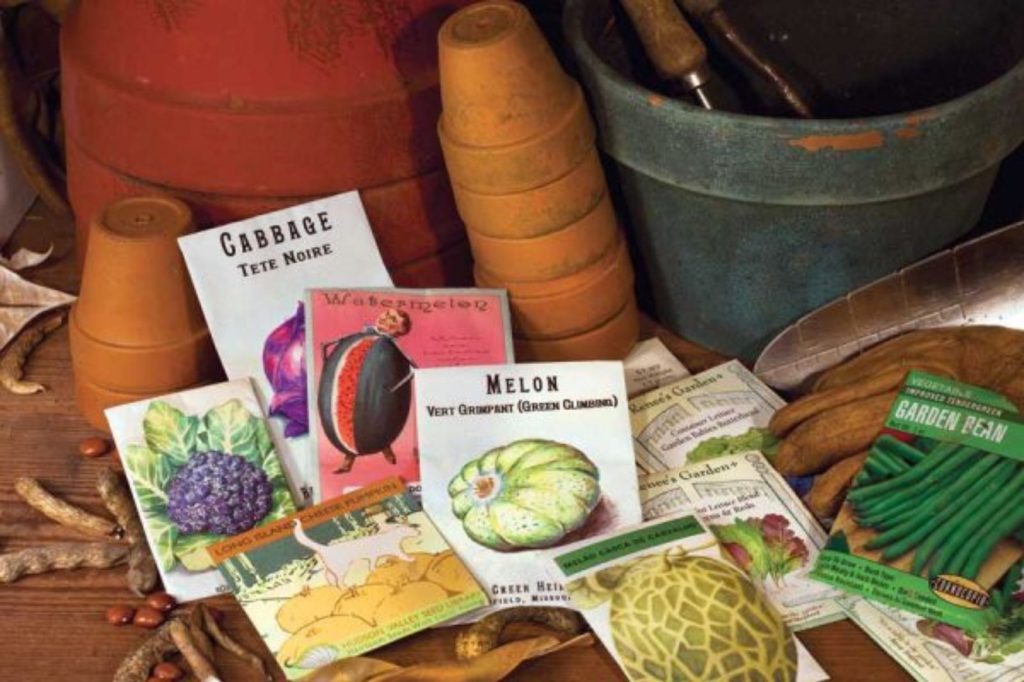
Saving your own seed is the best option for growing strong and resilient crops with heavy harvests. However, saving seed can be a little tricky and requires careful timing and a watchful eye to stop accidental crosses.
If you’re interested in saving your seeds then Seed to Seed is definitely worth a read. It covers everything from choosing the best plants for seed saving, breeding your own varieties and how to collect, store and germinate your seeds.
Of course you could just buy seeds from your local nursery or supermarket. But chances are that these seeds will be hybrid seeds (that you can’t save seeds from for next years crops) or they’ll be the same seeds every grower in your region uses.
Planting these seeds will make growing your crops all that much harder. They’ll be more susceptible to pests and diseases, because they’re identical to all the other farmers crops. So if one farm gets a disease or pest, it’ll quickly spread across the region and your crops will be easy targets.
Instead you should try to always get your seeds from an heirloom seed company. These seeds are hand selected every year by backyard and commercial growers from the crops with the highest yields and best pest and disease resistance in your area.
Open up a whole new world of flavor, color and choice. There’s beans that taste like butter, tomatoes as sweet as apples and carrots with all the colors of the rainbow. You don’t have to settle for boring white cauliflower heads, you can have green, yellow or purple caulifower!
The best time to buy your seeds is 3 months before you want to plant your garden. Some seeds you’ll want to start raising into seedlings a month before you intend to plant them. Whilst others you can plant directly into the soil when the ground is warm enough for them to germinate.
- Apricot Blossoms: Description, Flavor, Benefits, And Uses - April 23, 2024
- Everything you wanted to know about Green Tiger Tomatoes. - April 1, 2024
- Everything you wanted to know about Atomic Grape Tomatoes . - April 1, 2024

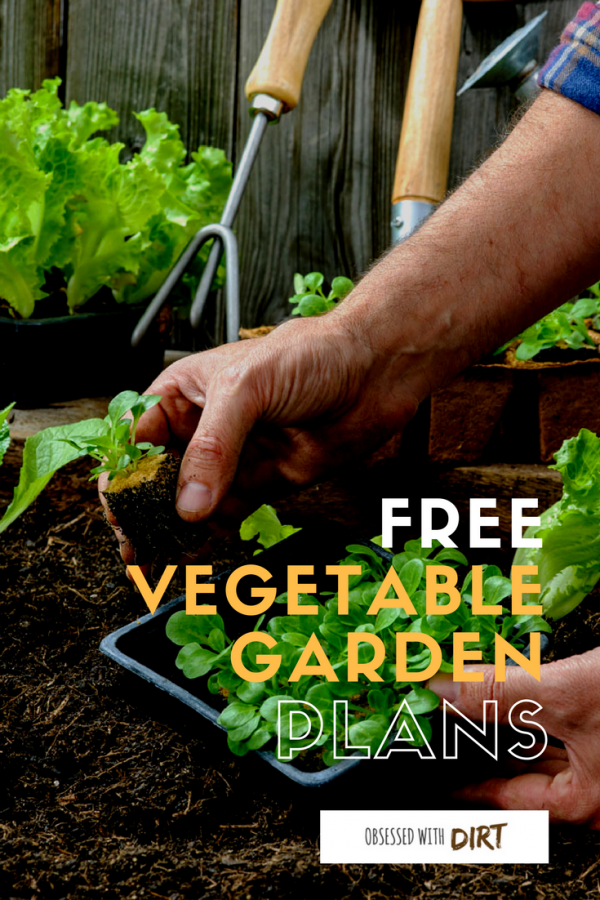
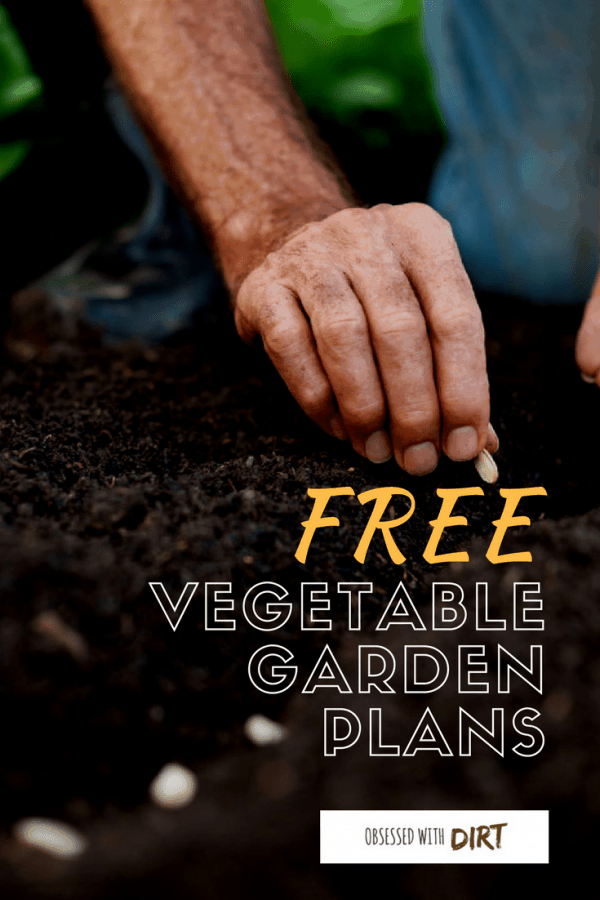
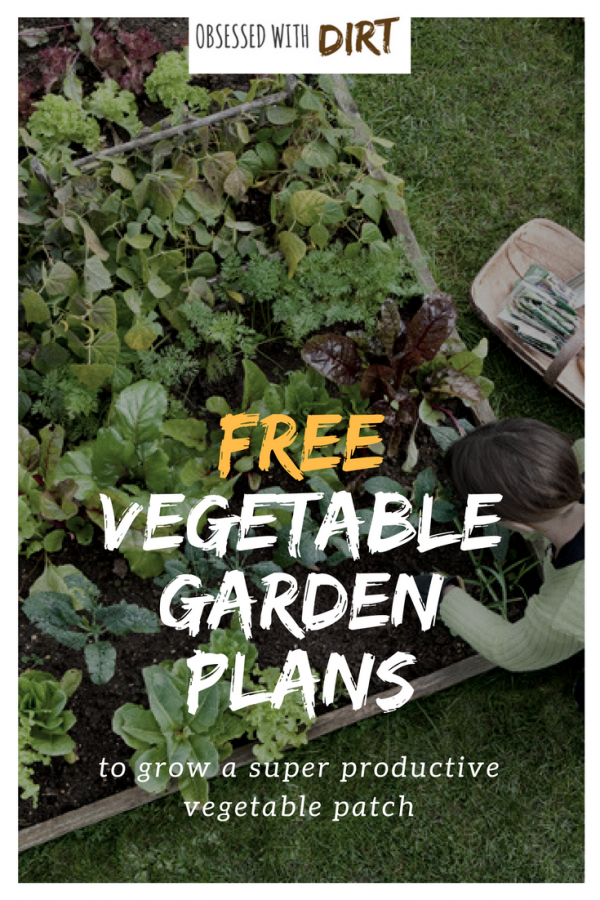
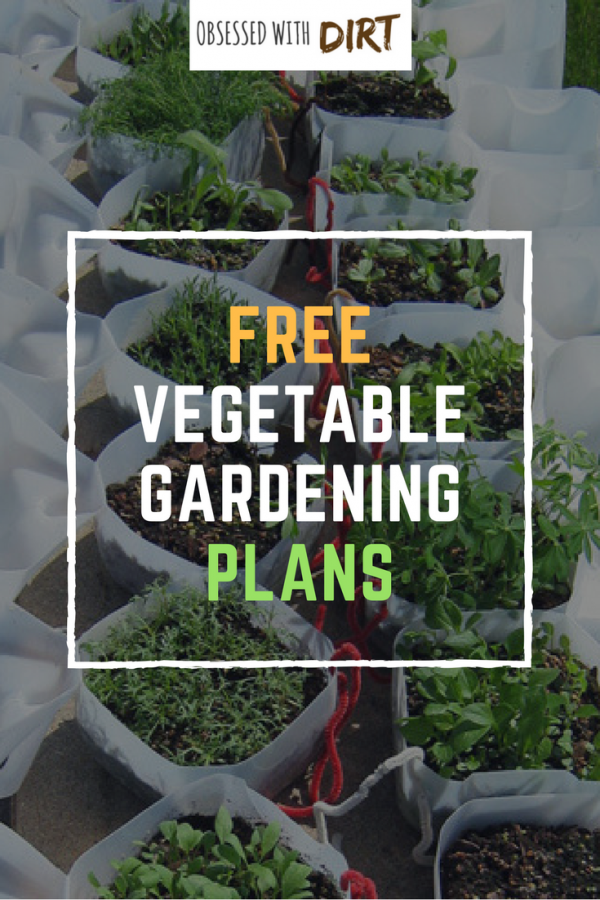
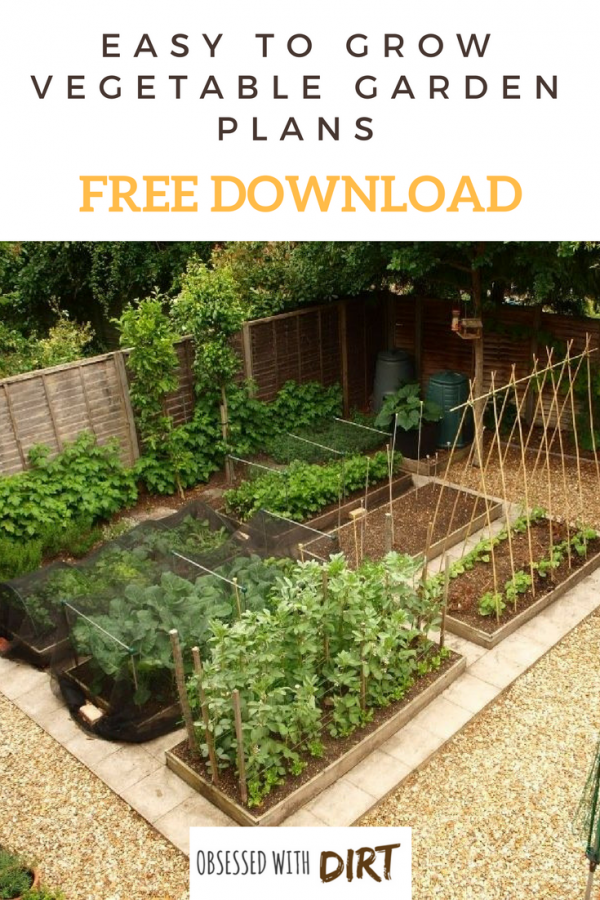
Where’s the plan for the Backyard Vegetable Garden Layout? I don’t see a link or image for it.
Thanks for pointing this out, the links on the last two layouts were broken. I’ve fixed them now, please take another look. 🙂
I don’t set the links. Are they still available?
Hi Michelle,
Clicking on the layouts should take you to the linked images. Please try this and let me know how you get on. Thanks for stopping by 🙂
I realize this is a year later, but great article, thank you!
Thank you for this! I’m a new gardener who rented a plot that’s 14×18! I feel a bit in over my head, to put it lightly. If you’re looking at the Backyard Vegetable Garden layout, are you suggesting all of the plants could fit in the beds they are listed in? Or just suggesting what would work well in those beds? I also don’t understand the crop rotation arrows. Is it possible to rent an experienced gardener virtually to help me? 😛
Exceptional Article! I think the best described article for the vegetable garden plan. It is step by step so I get all answers to my questions and is very informative at the same time.